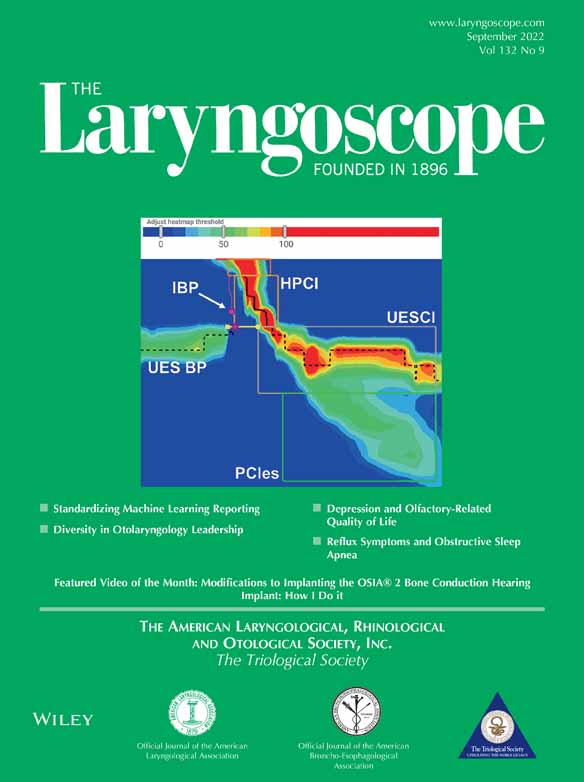An Exploration of Online Support Community Participation Among Patients With Vestibular Disorders
Editor's Note: This Manuscript was accepted for publication on November 26, 2021.
The authors have no funding, financial relationships, or conflicts of interest to disclose.
Abstract
Objectives/Hypothesis
To formally document online support community (OSC) use among patients with vestibular symptoms and gain an appreciation for the perceived influence of participation on psychosocial outcomes and the impact on medical decision-making.
Study Design
Self reported internet-based questionnaire.
Methods
The Facebook search function was paired with a comprehensive list of vestibular diagnoses to systematically collect publicly available information on vestibular OSCs. Next, a survey was designed to gather clinicodemographic information, OSC characteristics, participation measures, perceived outcomes, and influence on medical decision-making. The anonymous instrument was posted to two OSCs that provide support for patients with general vestibular symptoms.
Results
Seventy-three OSCs were identified with >250,000 cumulative members and >10,000 posts per month. The survey was completed by 549 participants, a cohort of primarily educated middle-aged (median = 50, interquartile range 40–60), non-Hispanic white (84%), and female (89%) participants. The participants' most cited initial motivation and achieved goal of participants was to hear from others with the same diagnosis (89% and 88%, respectively). Daily users and those who reported seeing ≥5 providers before receiving a diagnosis indicated that OSC utilization significantly influenced their requested medical treatments (72% daily vs. 61% nondaily, P = .012; 61% <5 providers vs. 71% ≥5 providers P = .019, respectively). Most participants agreed that OSC engagement provides emotional support (74%) and helps to develop coping strategies (68%). Membership of ≥1 year was associated with a higher rate of learned coping skills (61% membership <1-year vs. 71% ≥1-year P = .016).
Conclusions
The use of OSCs is widespread among vestibular diagnoses. A survey of two OSCs suggests these groups provide a significant source of peer support and can influence users' ability to interface with the medical system.
Level of Evidence
NA Laryngoscope, 132:1835–1842, 2022




